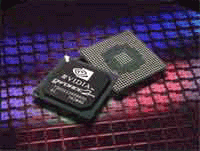 It
is a common syndrome for computer users to always crave more. No matter what
comes out or how powerful it is, one of the first things that many people do
is push the item to its limits in any way possible. You may be satisfied with
a new CPU for a few weeks or even a month, but before too long the huge speed
initially associated with a new component has all but disappeared. No longer
do you focus on how long it took your old computer to load Microsoft Word in
comparison to your new one, but rather you notice the amount of time that the
upgraded system takes to load the same program. The only way to revive that
upgraded feeling, short of upgrading again, is to squeeze every bit of power
possible out of the existing system. In addition, there are also a growing number
of people who simply want the fastest from the start. Rather than wait for the
new component wonder to ware off, these users tweak the component to the highest
degree from the start, ensuring that their system is the fastest possible. In
the vast majority of cases, both types of users employ the same method to achieve
the high speed goal: overclocking.
It
is a common syndrome for computer users to always crave more. No matter what
comes out or how powerful it is, one of the first things that many people do
is push the item to its limits in any way possible. You may be satisfied with
a new CPU for a few weeks or even a month, but before too long the huge speed
initially associated with a new component has all but disappeared. No longer
do you focus on how long it took your old computer to load Microsoft Word in
comparison to your new one, but rather you notice the amount of time that the
upgraded system takes to load the same program. The only way to revive that
upgraded feeling, short of upgrading again, is to squeeze every bit of power
possible out of the existing system. In addition, there are also a growing number
of people who simply want the fastest from the start. Rather than wait for the
new component wonder to ware off, these users tweak the component to the highest
degree from the start, ensuring that their system is the fastest possible. In
the vast majority of cases, both types of users employ the same method to achieve
the high speed goal: overclocking.
With rapidly changing technology and component speeds that increase in a manner that seems exponential, it has become commonplace to overclock. Many overclocking options are now set and modified via a simple Windows program, extending the art of overclocking from hard-core computer users to the average computer owner. One result of this is that now products are expected to overclock. Long gone are the days where a 6 MHz processor would not budge from its default speed setting. Recent times have seen MHz speeds increase greatly and manufacturers spec products more conservatively, two additional aspects that allowed overclocking to be a fun hobby for the average user.
Of the most commonly overclocked components, the video card is the one component that seems to be getting the most attention recently. Sure, people have been pushing the limits of their CPU for years by overclocking, but video card overclocking is an art that just recently came into play. This can be attributed to the popularity of 3D gaming: the rise of the 3D graphics card resulted in a large reliance on the video card to do more than just show 2D text. The video card is playing a more and more important role in the modern computer, making overclocking an even more attractive option. Similar to the way that a CPU is overclocked, overclocking a video card takes a bit of skill, a bit of luck, and a lot of knowledge. Unlike overclocking a CPU, each video processor responds to overclocking in very different manners. In this guide, we attempt to aid you, the reader and overclocker, on your quest to squeeze the maximum amount of speed from the most recent arrival to the video card market: the NVIDIA GeForce 2 GTS.










0 Comments
View All Comments